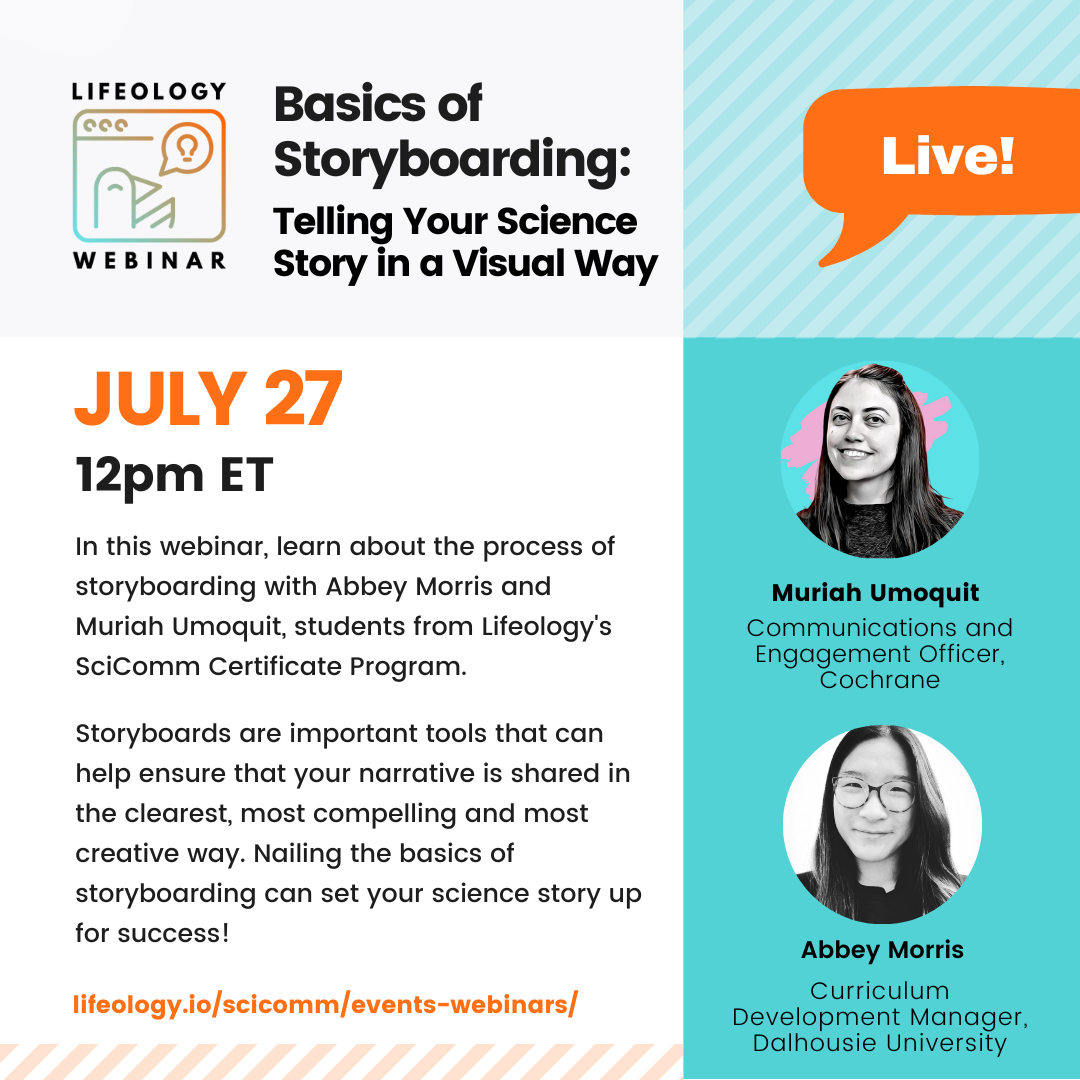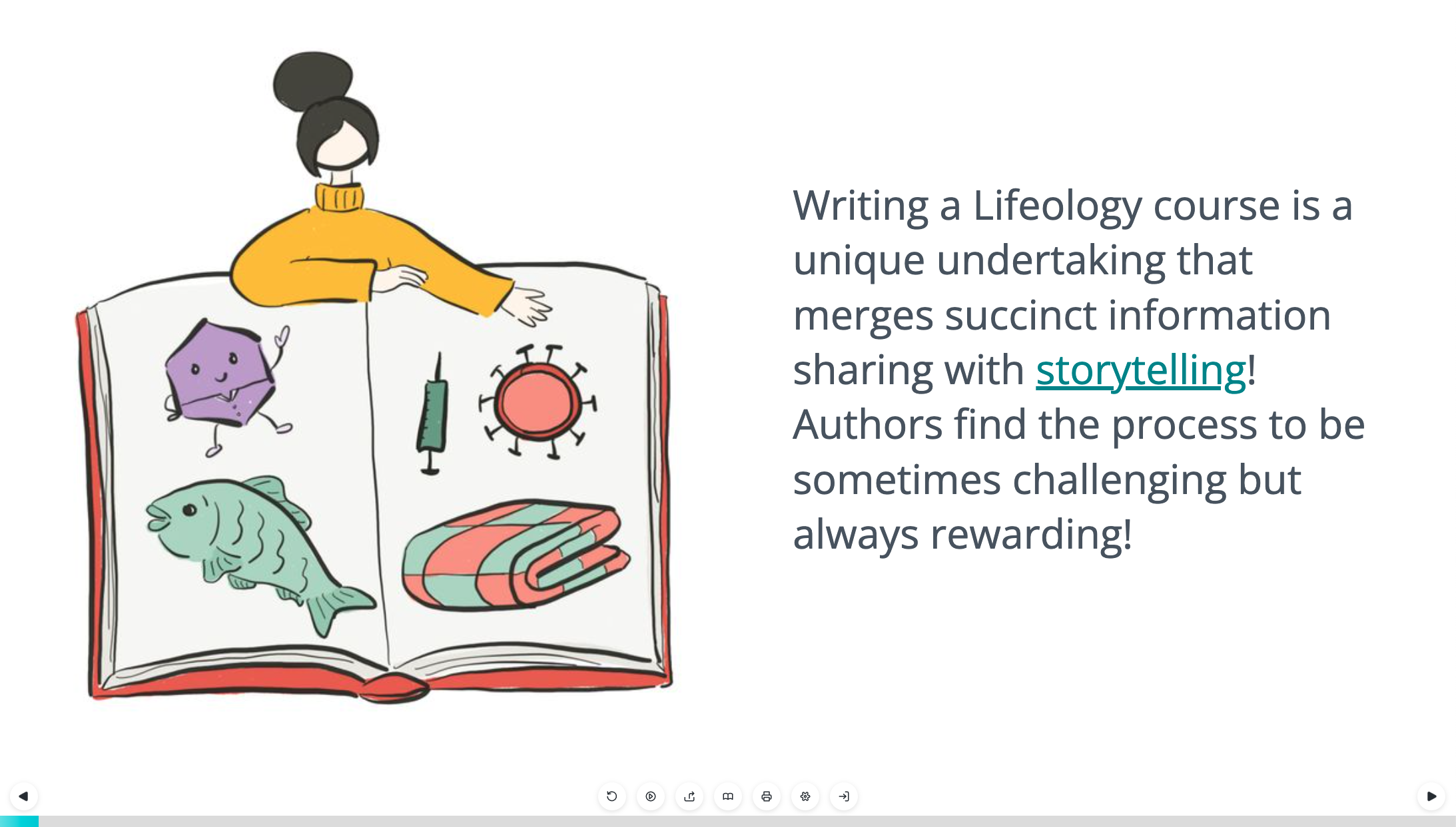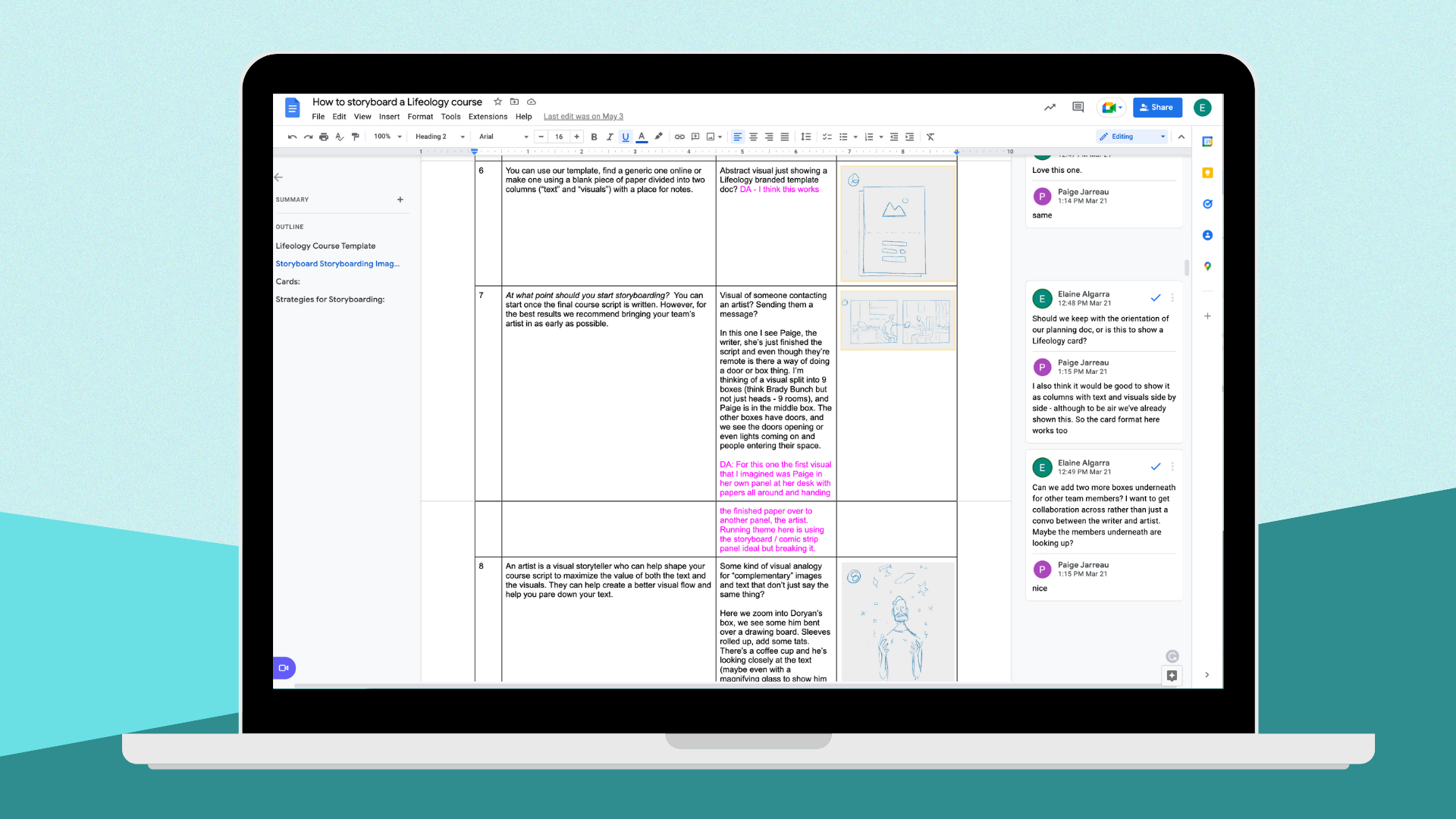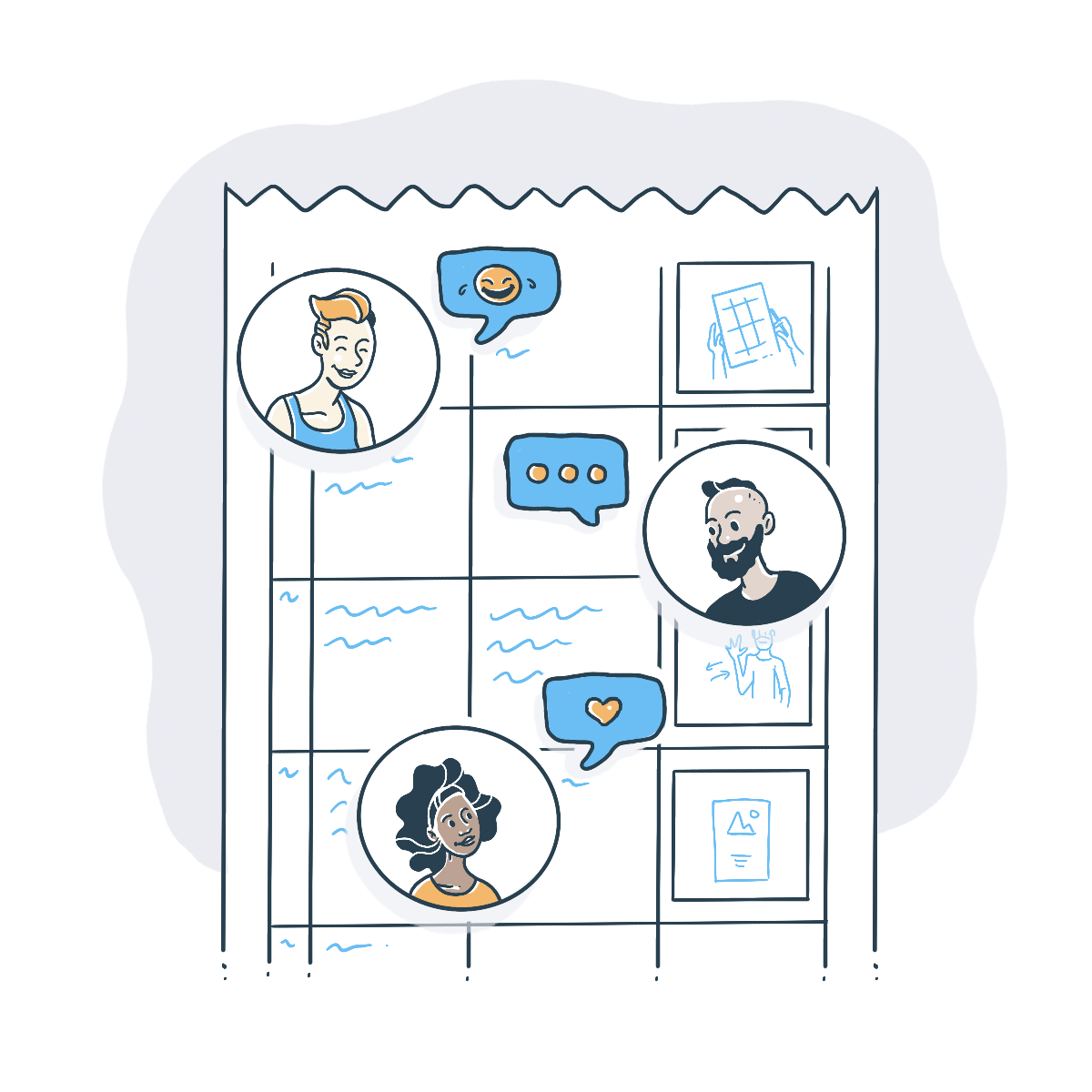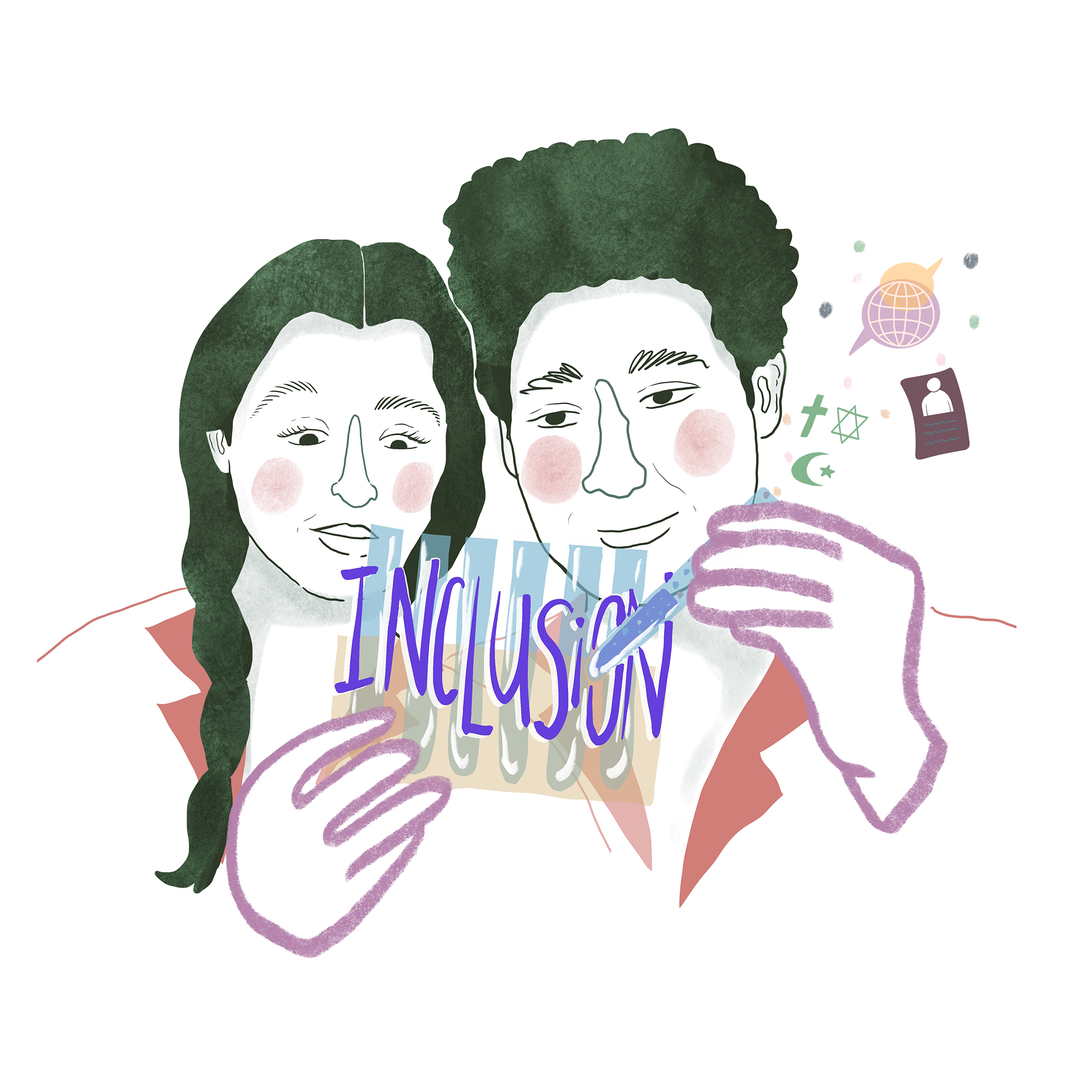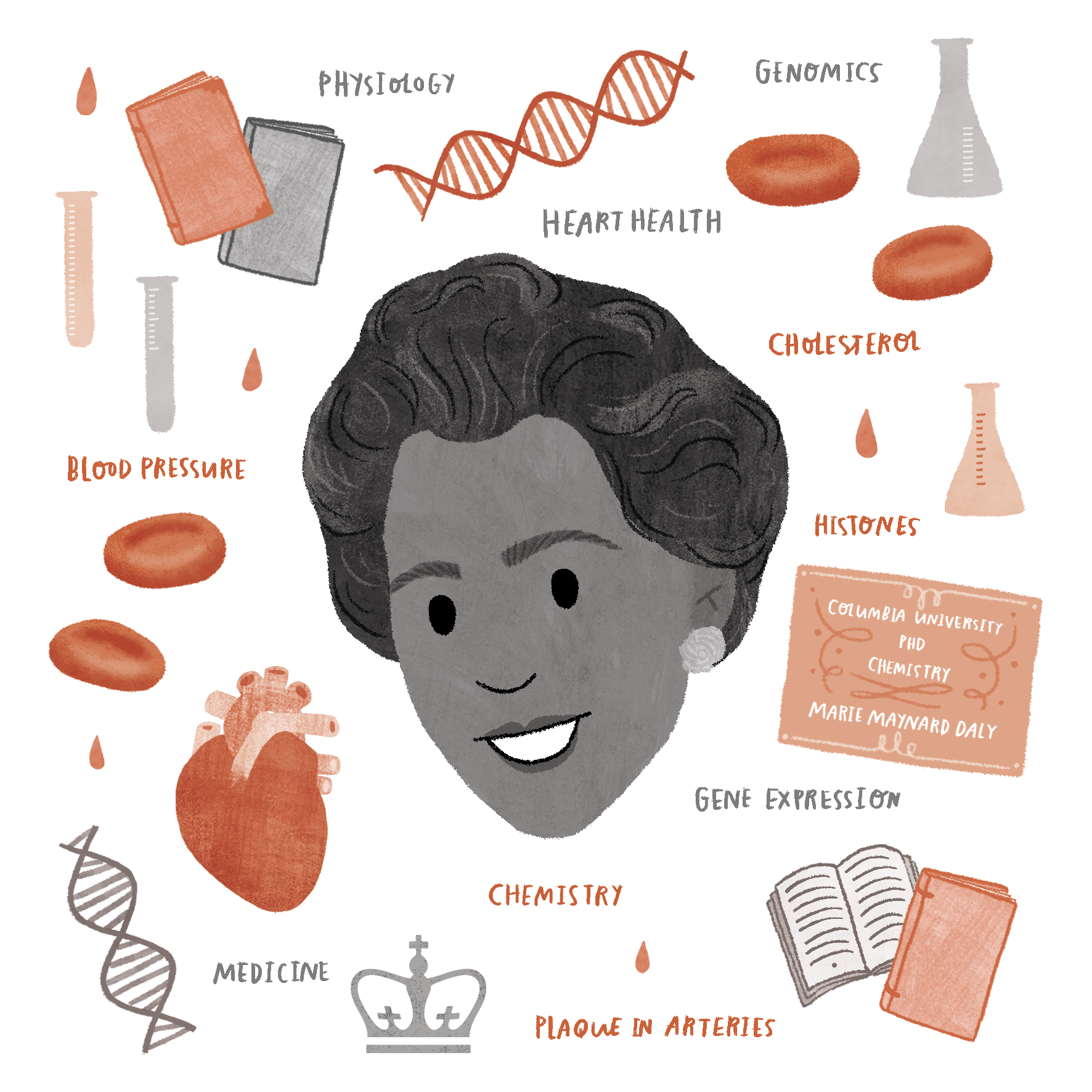This month, we have two new SciComm courses to help you learn how to write and storyboard your own Lifeology courses! Continue reading to learn more about these courses and an upcoming webinar on storyboarding. You can also read what the creators of this month’s course have to say about the creative process.
About the Course: Writing a Lifeology Course
“How to Write a Lifeology Course” walks you through the brainstorming and planning phases of writing content in a succinct, clear and story-driven way. This course was written by Lifeology co-founder Paige Jarreau and illustrated by Jacelyn Shu, a recent graduate of the Lifeology SciComm Certificate Program!
The course provides lots of tips for how to decide on your writing objectives and goals, audience and flow of information. It provides step-by-step tips, but also tells stories about how other Lifeology course authors have approached writing their course scripts! Jacelyn even borrowed art inspiration from those course examples, which you might recognize if you are a fan of our science and health library courses!
To get the most out of this course, try the activity at the end! The activity involves beginning to write your own Lifeology course by filling out this template “plan”!
One tip we want to accentuate is really thinking about the flow of information—this is always important, but in a Lifeology course (or a kid’s storybook!) where you can only see one “page” and a small amount of text at a time, it becomes critical. Hitting the right amount of repetition (so that the reader doesn’t get lost in the jump from one card to the next) without boring the reader is a delicate balance. Telling stories across cards and bridging visual elements and metaphors throughout the course can help tremendously! This gives a “flashcard” course a journey and enhances understanding and remembering.
View the course “How to Write a Lifeology Course” now to learn more!
Paige is a scientist turned science communicator and SciComm scholar–who also happens to be a co-founder of Lifeology. She is passionate about evidence-based science communication that combines art and storytelling. Jacelyn is an illustrator, designer and science communicator. She is also a lab manager at the University of British Columbia.
About the Course: Storyboarding a Lifeology Course
“How to Storyboard a Lifeology Course” outlines the process of storyboarding or planning the visuals for a Lifeology “flashcard” course through the work of Paige, Doryan, Elaine and a Lifeology Enterprise client! The course was written by our Communications Manager Elaine Algarra and illustrated by Lifeology co-founder Doryan Algarra.
The course is based on a real story and explores the storyboard process we used in our Lifeology Original story-driven courses. Find out how we develop the script into visual notes and sketches, what information we include, as well as general tips and strategies for collaborating on a successful course.
Storyboarding together allows the team to share their vision while allowing for script refinements and restructuring of the flow of the course. Together, the team makes early decisions about the visual narrative, providing the artist with early feedback and the ability to make simple adjustments before beginning the final artwork.
Often, it is easier for an artist to explain their ideas visually. Sketching allows them to communicate quickly and explore a variety of viewpoints. Have a go at creating your own storyboard using an example Lifeology course card script.
View the course “How to Storyboard a Lifeology Course” to learn more.
Elaine is a veteran educator turned communications manager. She loves managing projects, collaborating with art and science communities, storyboarding with team members, writing content and illustrating courses.
A Webinar
And if you want to learn even more about storyboarding, you’re in luck! On July 27 12pm ET, we have a Lifeology live webinar in which Lifeology community members will present their own experiences writing and storyboarding a Lifeology course. Whether you are working on a Lifeology course or another project, you’re sure to walk away from this webinar with some great storyboarding and collaborative creation tips to use. You can register now.
